

OT is a large copper and gold mine still in its infancy. The Concentrating plant has been operating only for three years and still learning about the processes and equipment.
As you see from its brief history, Mongolia is a relatively “young country” in the western ways of life. Although in general the Mongolian professionals are academically well qualified they lack the expertise in operating large plants and organisations.
Rio Tinto asked me to help OT with the re-organisation of their Asset Management processes and practices at the Concentrator Plant and to review the capabilities and reliability of their electrical systems. The work was to be conducted by me and another advisor from Perth office on a back to back operation, meaning that there was always one of us at the site.
I conducted four visits of 3 weeks each, living permanently on site in the south Gobi. I developed a great number of friendships and enjoy immensely working with Mongols.
During my time with Rio Tinto, in my capacity as Principal Advisor, I helped re-organising their Asset Management processes and practices at various sites worldwide. This type of work is very delicate because it involves telling people that have been doing a job for a long time, that there is a better way of doing it and asking them to change their ways. No one likes changing and we had some tricky situations with some of the implementations.
OT was a breath of fresh air in this regard. When we presented the proposal for changing the Concentrator Maintenance processes, senior management got very excited and ready to start trying it.
A few examples: Naidan, a brilliant electrical engineer, embraced enthusiastically all the recommendations I made to change the system that he had proposed. Boggi and the logistics team couldn’t wait to implement the modification we proposed to the management process used to change over the big mining trucks engines (called Rotables Management).
The main difficulty was communications. Mongolian language uses Cyrillic alphabet which made it unreadable to us. The site employs a large number of translators with reasonable command of English. All the material delivered to the workers had to be translated to Mongol. We had 4 Trainers/Translators working full time with us to help with translations and communications: Mojo, Jargal, Naba and Selengue.
On site all the Mongolian employees have short names as the Mongolian ones are usually too long and difficult for a western person to pronounce. For example our lovely Mojo’s name was Munkhjargal Khurelkhuu and Naba was Naranbayar Amarsanaa.
We normally selected a group of workers that could understand reasonably well English and ran the material that we were going to use. This was used as training for our Trainers/Translators and to test the quality and suitability of the material.
Every day I felt rewarded in my efforts by the acceptance of what I proposed, a striking difference from what I normally experienced in most of the re-organisation work done in other sites in the world.
For that reason I enjoyed immensely my time with OT and would not take much to convince me to return if they want. I would prefer in the summer really.
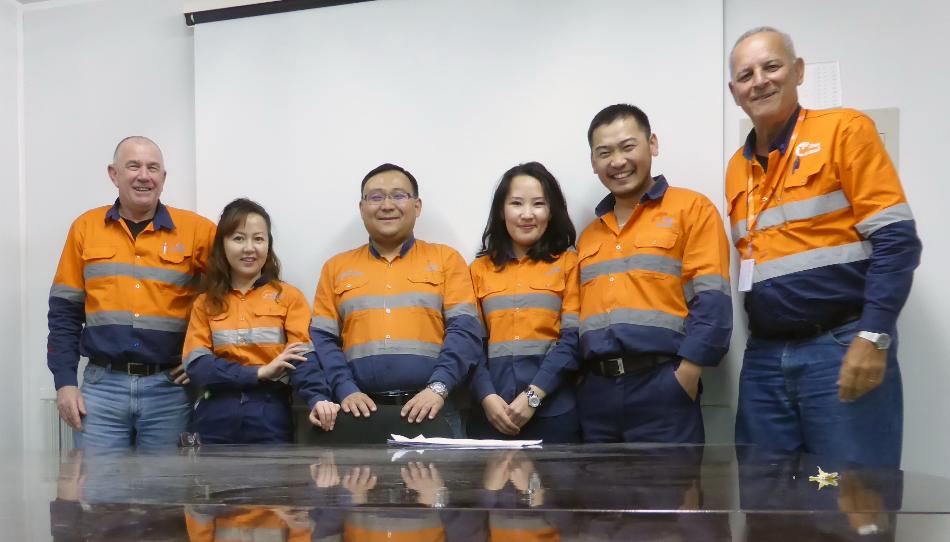
The Concentrator Asset Management Project Team
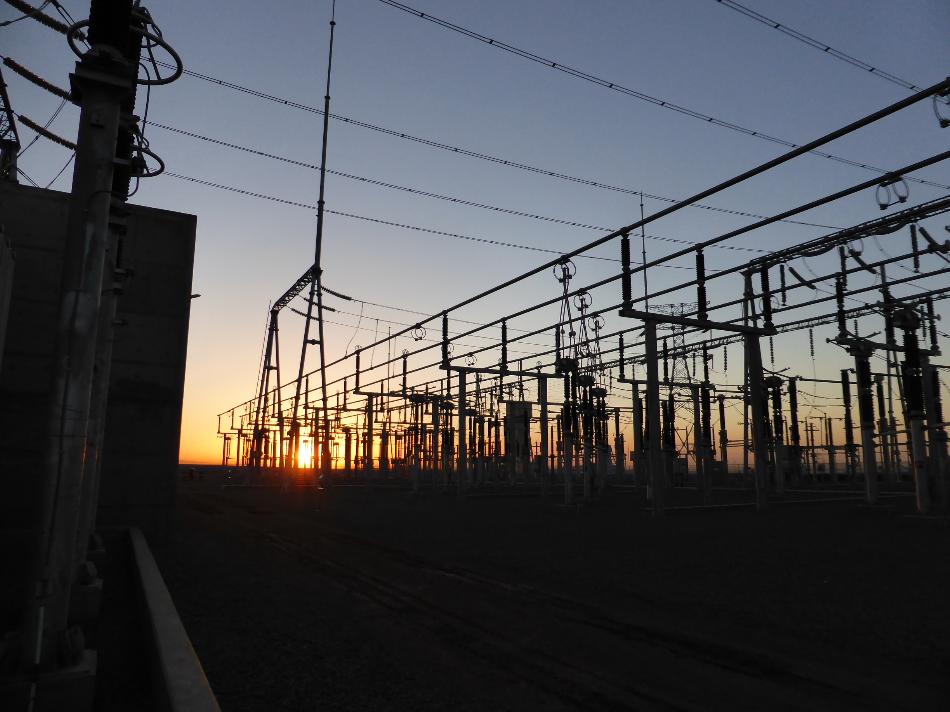
The main 220 kV substation
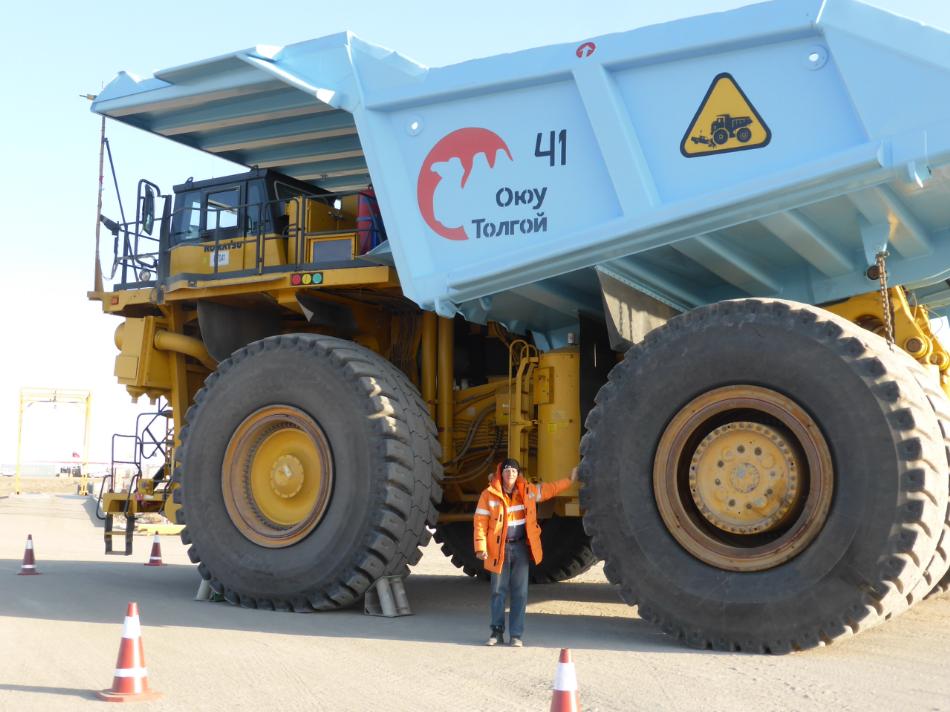
A mine truck painted blue to comemorate Men's Day
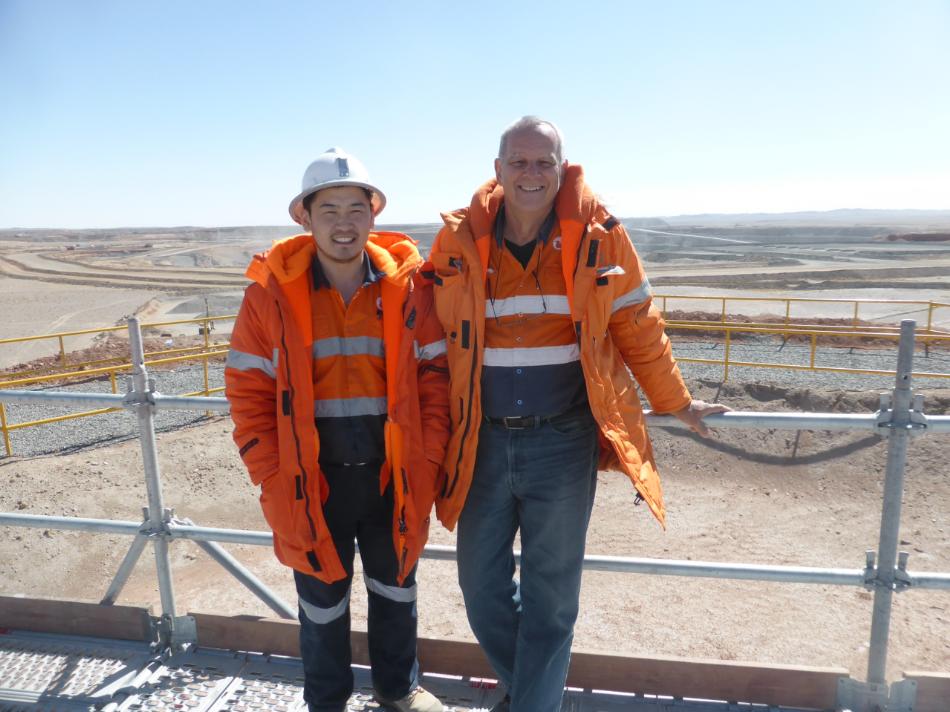
Naba and I
From the Capital Ulaanbaatar we have a one hour flight on a regional airline to Khanbumbat airport in Khanbogd, Ömnögovi region near the OT mine. The plane is a chartered flight that carry mine employees only. Khanbumbat airport is the second airport in passenger traffic in Mongolia after Chinggis Khaan (the correct way to spell Genghis Khan) International Airport. It shows the size of the mine and its importance to the country. The airport serves nearly 100,000 passengers annually. A company bus take us to the mine camp.
On my first trip I was allocated a western type room and once again I was surprised with the standards of the accommodation. The room was spacious with a reasonable size private bathroom. In addition to the western type accommodation there were hundreds of gers (typical Mongolian tents). Compared with the rooms we get on a mine site in Australia, this was a luxury room.
Approximately 3000 people live in two camps provided with all the modern facilities: mess room, cinema, gymnasium, sports fields, convenience shop, bars, pizza houses, Mongolia style restaurant, hairdresser and hospital.
The mess room serves three meals a day and provides Mongolian and western type food. The soups are delicious and nourishing. With temperatures always below zero and sometimes as low as -28 one needs to pack up on energy (meaning fat). Being so far from the sea, fish is not served often.
The mine camp is a very big area with offices, plant, workshops and services buildings spread over a very large area. OT is the third largest copper mine in the world after Escondida in Chile and Bingham Canyon in USA. With such inclement weather all the installations are indoors. The processing plants, stockpiles, workshops were located in very large and heated buildings. Although there was a taxi service we walked everywhere and the exercise was welcome.
For the first time I was subject to such low temperatures and the only thing I had to get used was to manage the layers of clothing required to stand the outside temperatures. I was lucky that most of my work was indoors and therefore I was only exposed to the weather when I had to go from one place to another.
I spent 3 weeks at a time on site, working continuously without a break for 10 hours a day with only one hour for lunch. The offices are spacious and a luxury for a mine site.
As mentioned the attitude of people to the work we were doing, was excellent and therefore the long hours were not a drag and the work was rewarding and pleasant. During the meals we sat in long tables with around 20 people on each table. At the peak hours the tables were full, but outside of the popular times the place was quiet. From our second trip onwards a pasta counter was available three times a week at the mess where one could order fresh past with a wide selection of sauces.
If one wants to organise a social barbeque, for a fee, the mess would provide a cook and all the food, served in a special BBQ area with cut drums with open fire burning making the BBQ a very pleasant social time.
Two pizza bars and a Mongolian style restaurant provided payed options for the free mess food.
In my second visit I requested to be housed in a ger and I loved it. A ger is a very large felt tent used by the Mongols. Its construction although very simple it is extremely robust and able to stand the inclement weather and high winds of the stepps. The photos show details of its construction and how spacious and comfortable the gers were and we felt as if we were at home in a mine site. I stayed twice in gers and highly recommend.
The real ger used by the nomads do not have a toilet attached and it and is heated by coal or dung fire in the middle. Our gers had a floor heating supplemented by a regular split air conditioning unit and an attached private toilet block. There was only one issue with the gers. They were built in groups of 4 units and the individual toilets shared a common sceptic tank and it looks as if the drain circuits did not have an efficient sealing system. We had to block every drain hole in the toilet or we would have an unpleasant methane smell in the toilet.
At the meal time we had the opportunity to socialise with the locals and observe their general behaviour as we could not understand the language. The majority of the people working on site could have basic conversations in English. One thing that amazed me was that the mood in the mess was always cheerful and in the conversations with my Mongol colleagues I never heard them complaining about anything, be that life in general or work.
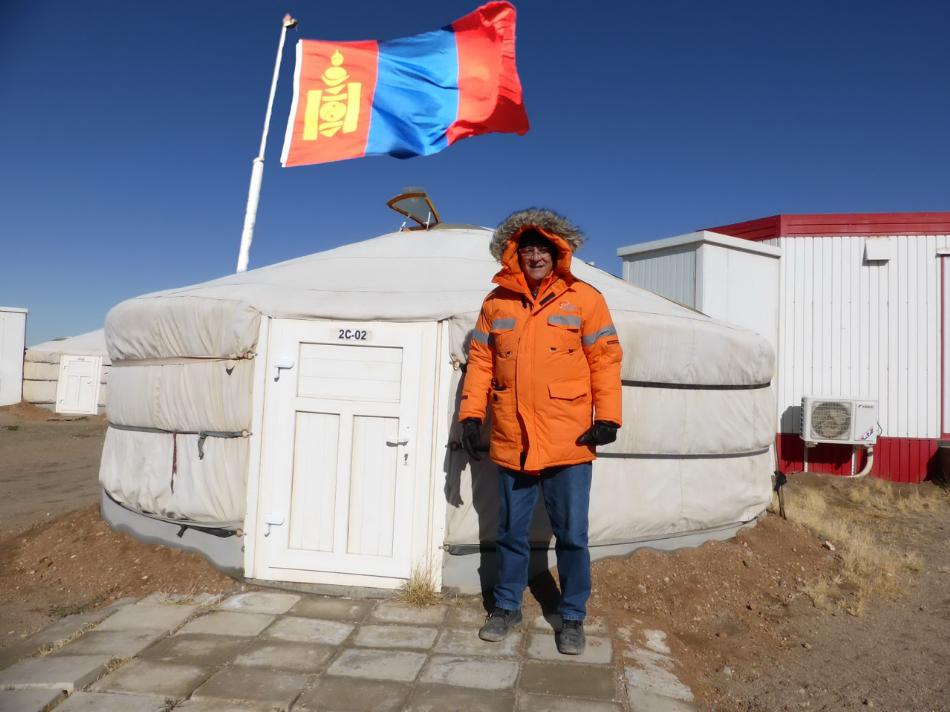
My Ger in my fourth visit
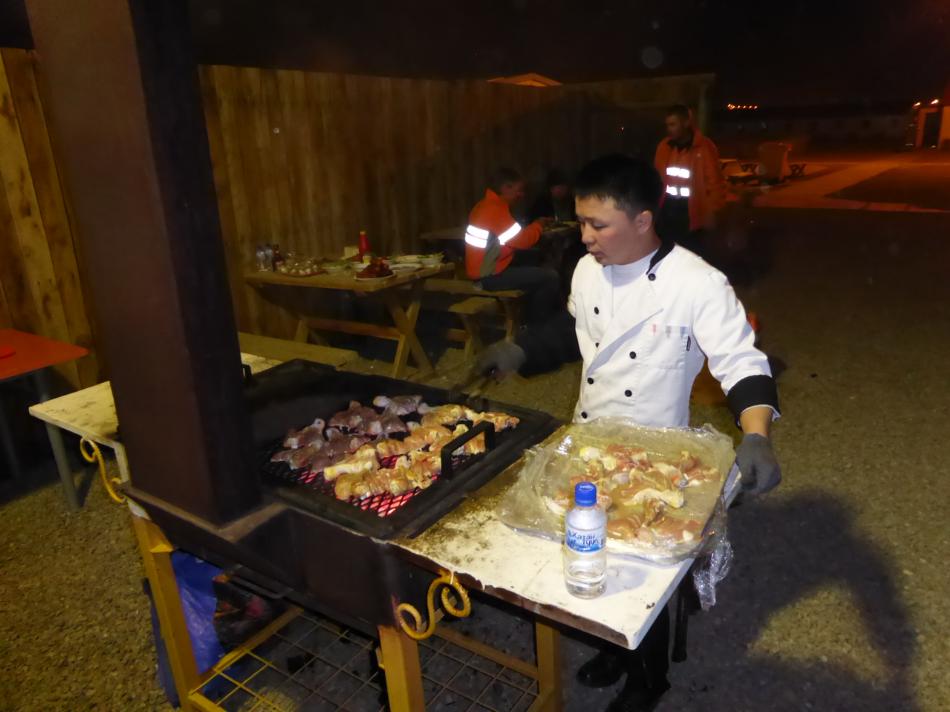
The Chef provided by the mess when you organise a barbeque
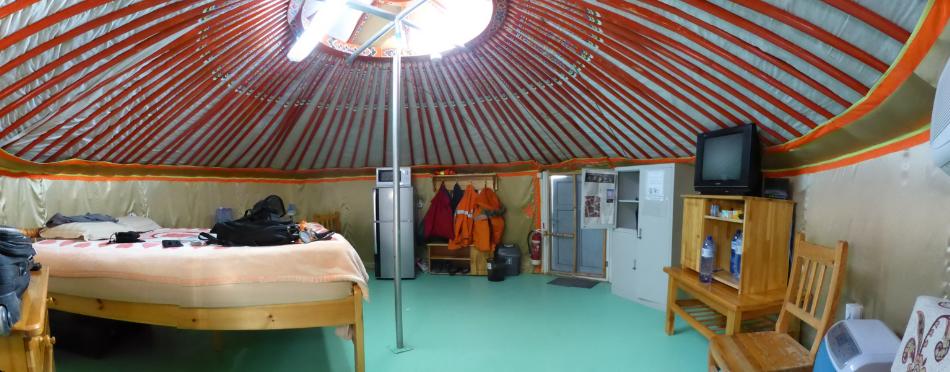
Inside of my Ger
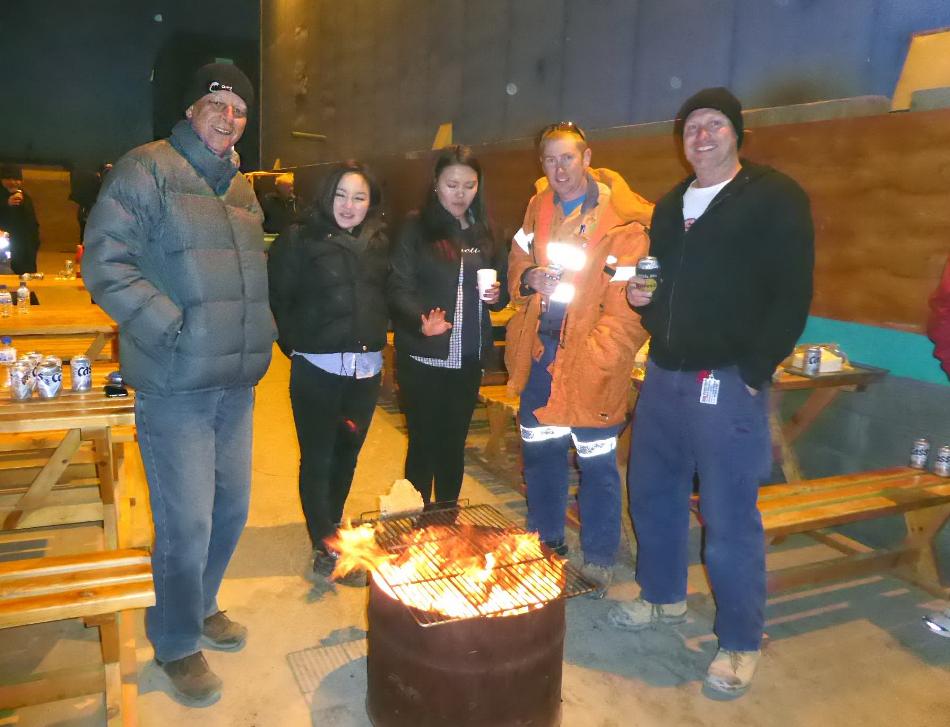
Socialising at a barbeque
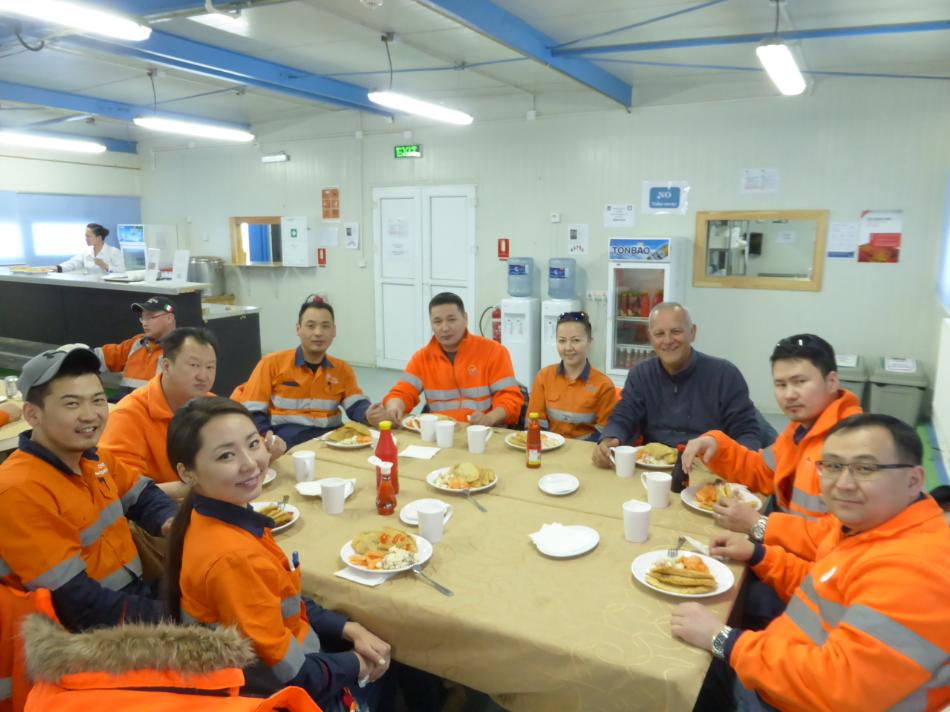
My farewell dinner in the Mongolian restaurant